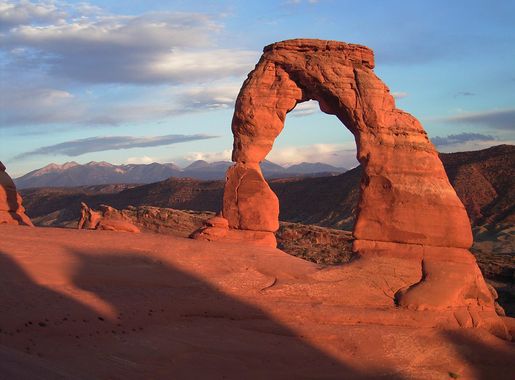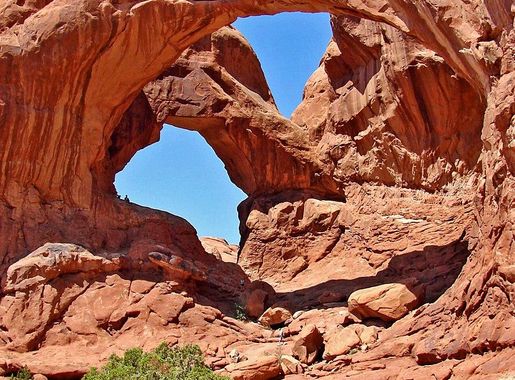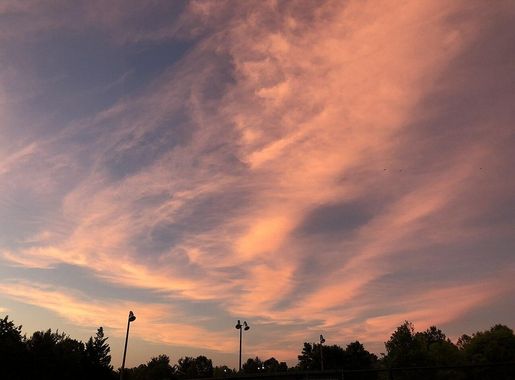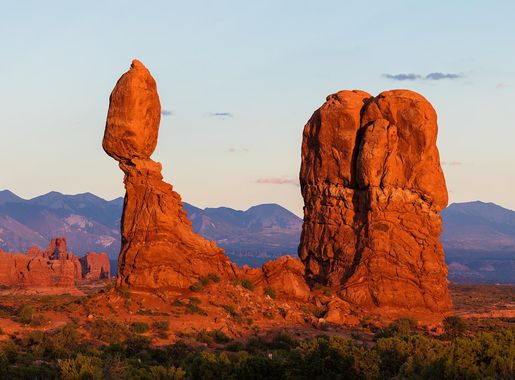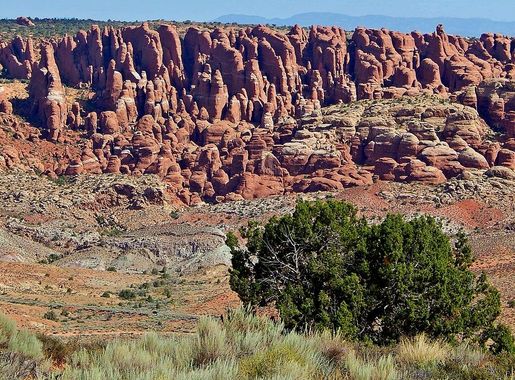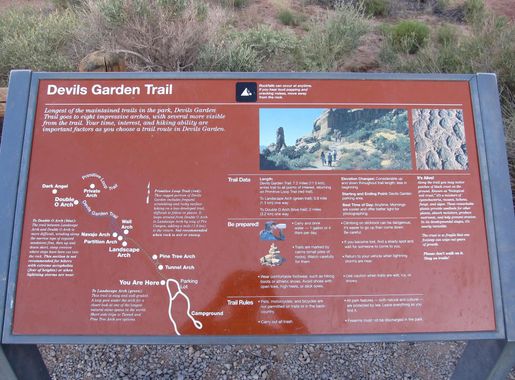
Arches National Park: Nature's Red Rock Wonderland
Discover the stunning red rock formations and natural stone arches of Arches National Park, a must-visit destination in Utah's rugged landscape.
Arches National Park, located in eastern Utah, is a captivating landscape adorned with over 2,000 natural stone arches. This unique park showcases the beauty of red rock formations, sculpted by millions of years of erosion. The park's most famous feature is the Delicate Arch, a stunning freestanding arch that has become an iconic symbol of Utah's rugged beauty. Visitors to Arches National Park can explore a variety of trails that cater to all levels of hiking experience. From the easy walk to the Windows Section to the more challenging trek to the Double O Arch, there's something for everyone. The park also offers breathtaking views, especially during sunrise and sunset, when the red rocks glow with an ethereal light. Beyond hiking, the park is a haven for photographers, offering countless opportunities to capture the dramatic landscapes. Wildlife enthusiasts can also spot desert animals like bighorn sheep and various bird species. Whether you're an adventurer, a photographer, or simply someone who appreciates natural beauty, Arches National Park promises an unforgettable experience.
Local tips in Arches National Park
- Visit early in the morning or late in the afternoon to avoid the heat and the crowds.
- Bring plenty of water and sun protection, as the desert environment can be harsh and dehydrating.
- Check the park's website for trail conditions and closures before you go.
- Consider visiting in the spring or fall for milder temperatures and more comfortable hiking conditions.
- Don't miss the chance to stargaze; the park is an excellent spot for observing the night sky.
Arches National Park: Nature's Red Rock Wonderland
Arches National Park, located in eastern Utah, is a captivating landscape adorned with over 2,000 natural stone arches. This unique park showcases the beauty of red rock formations, sculpted by millions of years of erosion. The park's most famous feature is the Delicate Arch, a stunning freestanding arch that has become an iconic symbol of Utah's rugged beauty. Visitors to Arches National Park can explore a variety of trails that cater to all levels of hiking experience. From the easy walk to the Windows Section to the more challenging trek to the Double O Arch, there's something for everyone. The park also offers breathtaking views, especially during sunrise and sunset, when the red rocks glow with an ethereal light. Beyond hiking, the park is a haven for photographers, offering countless opportunities to capture the dramatic landscapes. Wildlife enthusiasts can also spot desert animals like bighorn sheep and various bird species. Whether you're an adventurer, a photographer, or simply someone who appreciates natural beauty, Arches National Park promises an unforgettable experience.
When is the best time to go to Arches National Park?
Iconic landmarks you can’t miss
Arches National Park Visitor Center
Experience the breathtaking beauty of Arches National Park at the Visitor Center, your gateway to Utah's stunning natural wonders and iconic rock formations.
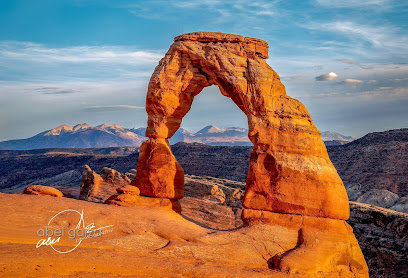
Dead Horse Point State Park
Experience breathtaking views and adventure at Dead Horse Point State Park, a stunning natural gem in Utah perfect for outdoor enthusiasts and nature lovers.
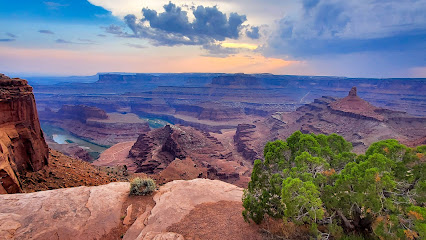
Wilson Arch
Explore the stunning Wilson Arch in Moab, Utah, a breathtaking natural wonder surrounded by vibrant desert landscapes.
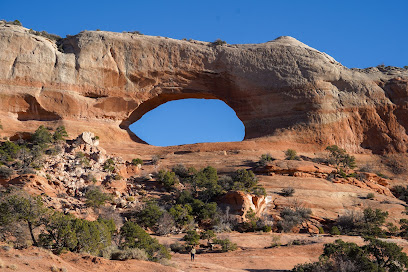
Natural Bridges National Monument
Explore the stunning rock formations and rich history at Natural Bridges National Monument, a hidden gem in Utah's breathtaking landscapes.
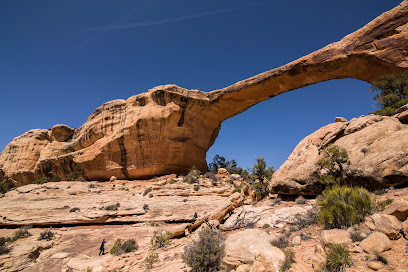
Landscape Arch
Experience the breathtaking beauty of Landscape Arch in Arches National Park, a stunning natural wonder that captivates every visitor.
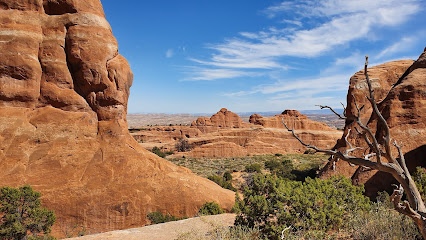
Desert Arch Window Rock
Explore the breathtaking Desert Arch Window Rock in La Sal, Utah—a stunning natural arch perfect for photography, hiking, and enjoying the serene desert landscape.
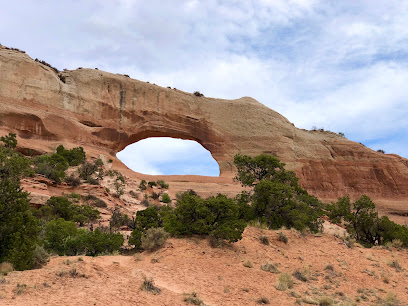
Unmissable attractions to see
Arches National Park Visitor Center
Explore the gateway to Arches National Park, where breathtaking landscapes and unique geological wonders await every visitor.

Delicate Arch
Discover the breathtaking beauty of Delicate Arch in Utah, a must-visit natural landmark and iconic symbol of the American West.
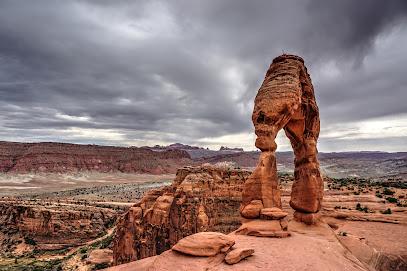
Delicate Arch
Explore Delicate Arch, an iconic natural landmark in Utah, offering stunning views and unforgettable hiking experiences amid breathtaking landscapes.
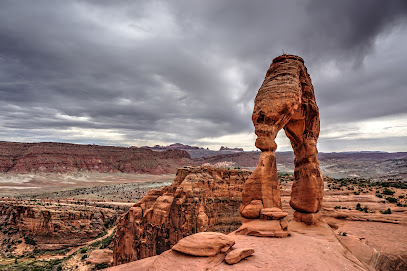
Dead Horse Point State Park
Explore breathtaking vistas and outdoor adventures at Dead Horse Point State Park, a must-visit destination for nature lovers near Moab, Utah.
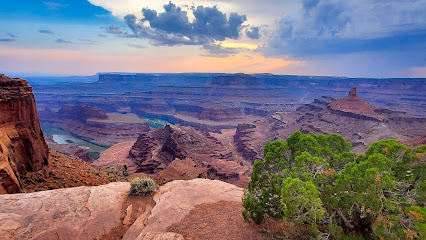
DeadHorsePoint
Experience the breathtaking views and stunning landscapes of Dead Horse Point State Park, a must-visit scenic gem in Utah's red rock country.
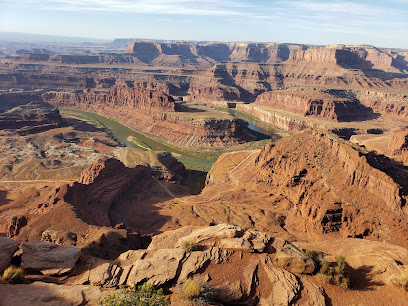
Double Arch
Explore the breathtaking beauty of Double Arch, a remarkable geological wonder in Arches National Park, Utah, showcasing nature's artistry in stunning red rock formations.
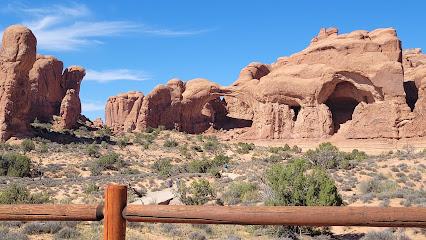
Red River Adventures
Discover the thrill of rafting and rock climbing at Red River Adventures, Moab's premier outfitter for unforgettable outdoor adventures in stunning landscapes.

Delicate Arch Trailhead
Discover the breathtaking beauty of Delicate Arch, a must-visit hiking destination in Moab's stunning Arches National Park, perfect for nature lovers and adventurers.

Devil's Garden Trailhead
Discover the breathtaking beauty of Devil's Garden Trailhead in Arches National Park, featuring unique arches and stunning hiking trails.

Moab Information Center
Explore Moab's breathtaking landscapes and plan your unforgettable adventure at the Moab Information Center, your essential travel resource.
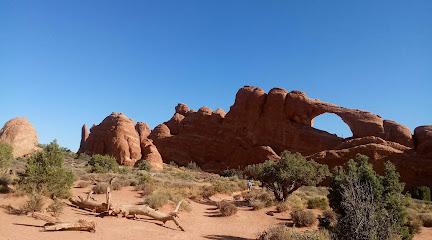
Sand Dune Arch
Explore the serene beauty of Sand Dune Arch in Utah's Arches National Park, a breathtaking natural wonder perfect for hiking and unforgettable vistas.
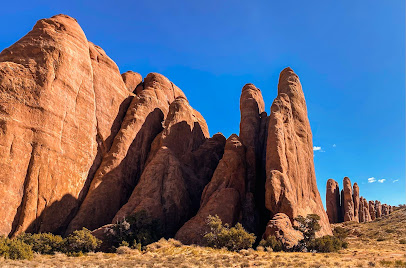
Lower Delicate Arch Viewpoint
Explore the stunning Lower Delicate Arch Viewpoint in Moab, Utah—a scenic spot that offers breathtaking views of the iconic Delicate Arch in Arches National Park.
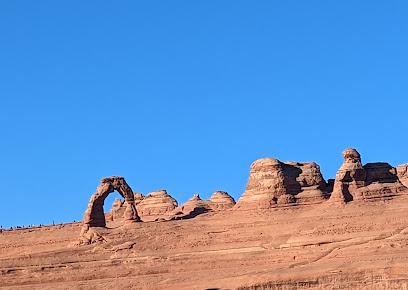
Slickrock Bike Trail
Discover the breathtaking Slickrock Bike Trail in Moab, Utah – a unique adventure for biking, hiking, and stunning desert vistas.
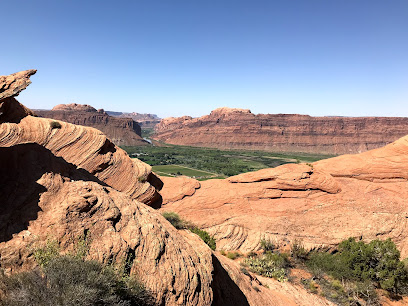
Rotary Park
Experience nature's beauty and family-friendly fun at Rotary Park in Moab, Utah, where adventure meets tranquility in a stunning setting.
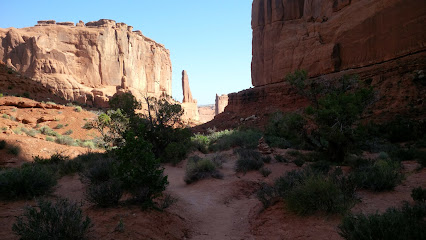
Navtec Expeditions
Explore the stunning landscapes of Moab with Navtec Expeditions, your gateway to thrilling adventures in Utah's breathtaking national parks.
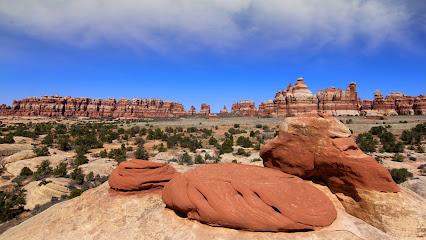
Essential places to dine
Wilson Arch
Explore Wilson Arch: A Stunning Natural Landmark in Moab's Breathtaking Landscape
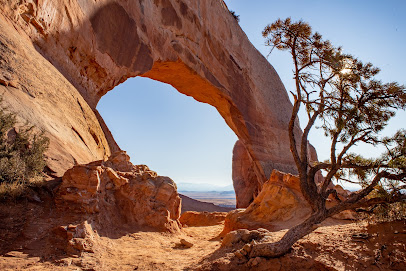
McDonald's
Experience familiar fast food flavors at McDonald's in Moab - your go-to stop for delicious meals on your Utah adventure.
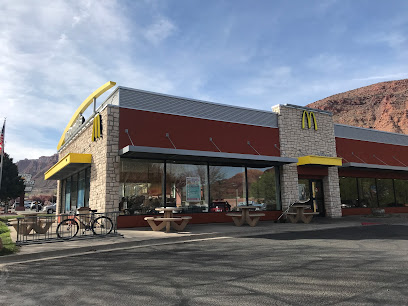
Wendy's
Enjoy delicious fast food classics at Wendy's in Moab - your go-to spot for a quick meal while exploring Utah’s stunning landscapes.
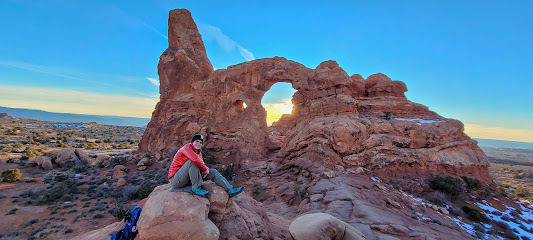
Subway
Enjoy fresh and delicious sandwiches at Subway in Moab, where customization meets convenience amidst stunning Utah landscapes.

Markets, malls and hidden boutiques
Moab Rock Shop
Explore the natural wonders of Moab Rock Shop, where geology meets artistry in the heart of Utah's stunning landscapes, perfect for all visitors.
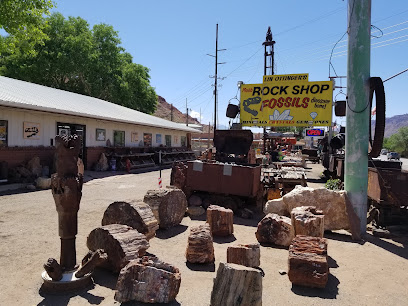
Gearheads Outdoor Store
Explore Moab with Gearheads Outdoor Store – your one-stop shop for top-quality outdoor clothing and equipment.

Moonflower Community Cooperative
Explore Moab's vibrant community spirit at Moonflower Community Cooperative, your go-to destination for organic groceries and delicious deli meals.

Moab Gear Trader
Discover Moab Gear Trader: Your ultimate outdoor clothing and equipment shop for unforgettable adventures in Moab, Utah.

Back of Beyond Book Store
Explore the enchanting Back of Beyond Book Store in Moab, Utah, where every book tells a story of adventure and the spirit of the Southwest.

The T-Shirt Shop
Explore a vibrant collection of unique T-shirts celebrating Utah's natural beauty and adventurous spirit at The T-Shirt Shop in Moab.

Lema's Kokopelli Gallery
Discover unique local art, jewelry, and handcrafted goods at Lema's Kokopelli Gallery in Moab, Utah - a true treasure for art enthusiasts.
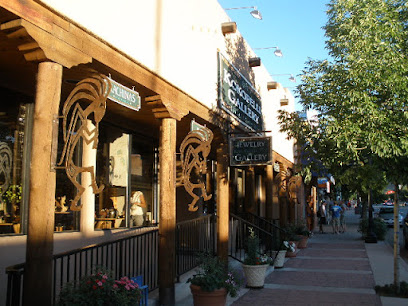
Arches Trading Post
Explore a treasure trove of unique souvenirs and local art at Arches Trading Post in Moab, Utah – the perfect stop for every traveler.
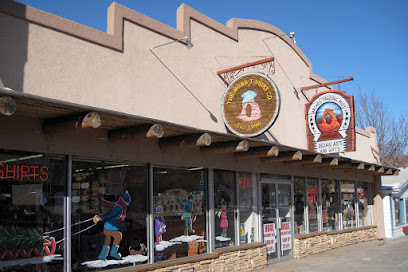
Moab Made
Discover the heart of Moab through unique local art and handcrafted gifts at Moab Made, your go-to destination for treasures and inspiration.
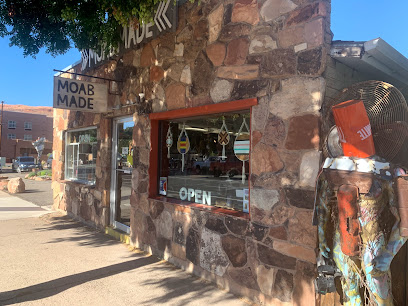
Hogan Trading Company
Explore Hogan Trading Company in Moab for unique gifts, local art, and a true taste of Utah's vibrant culture.
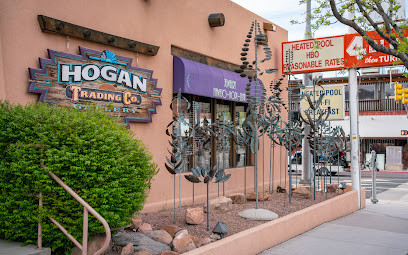
Simply Moab
Discover unique souvenirs and clothing that celebrate the adventurous spirit of Moab, Utah at Simply Moab gift shop.
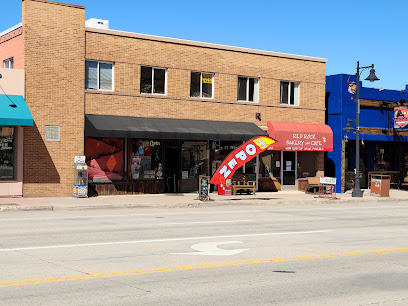
Desert Dreams
Explore Desert Dreams in Moab, Utah, where unique gifts and local artistry come together to create unforgettable souvenirs.
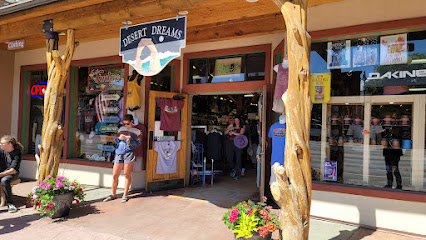
Cowboys and Indians Trading Co.
Discover authentic Western apparel and unique memorabilia at Cowboys and Indians Trading Co. in the heart of Moab, Utah.

Desert Sol
Discover unique gifts and local crafts at Desert Sol, the perfect stop for souvenirs in the heart of Moab, Utah.

Desert Wild
Discover top-quality outdoor clothing and gear at Desert Wild in Moab, your ultimate destination for adventure-ready essentials.
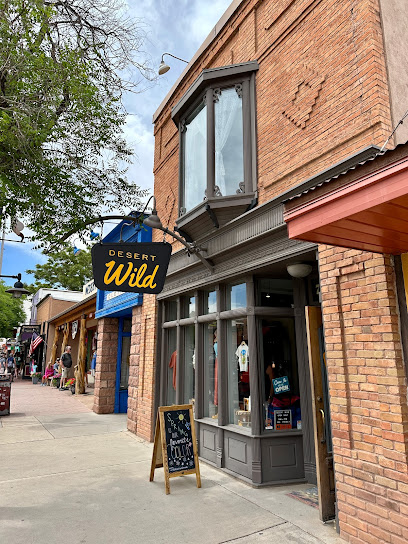
Essential bars & hidden hideouts
Zax Restaurant
Discover Zax Restaurant in Moab, where delicious American fare meets a lively atmosphere perfect for tourists and locals alike.
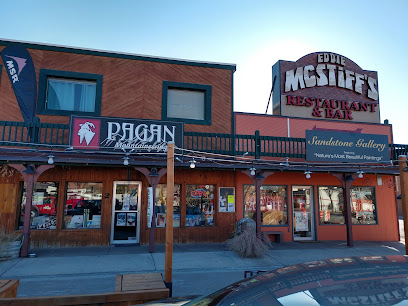
The Blu Pig
Experience mouthwatering barbecue and live blues music at The Blu Pig, a must-visit culinary gem in Moab, Utah.

The Spoke on Center
Discover The Spoke on Center in Moab, where delicious American cuisine meets a vibrant bar atmosphere, perfect for all visitors.
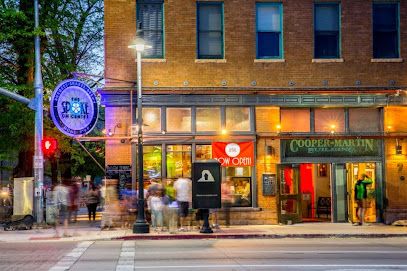
The Broken Oar
Experience the heart of American cuisine at The Broken Oar, a premier restaurant in Moab, Utah, specializing in barbecue and steak.

Moab Brewery
Discover the heart of Moab at Moab Brewery - a perfect blend of craft beer and American dining in stunning Utah.

Sunset Grill
Indulge in exquisite steaks and stunning views at Sunset Grill, Moab's top destination for an unforgettable dining experience.
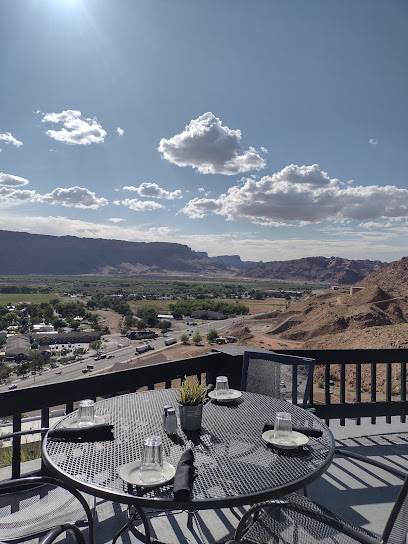
Arches Thai
Experience the rich flavors and authentic dishes of Thailand at Arches Thai in Moab, the perfect culinary stop for adventurous tourists.
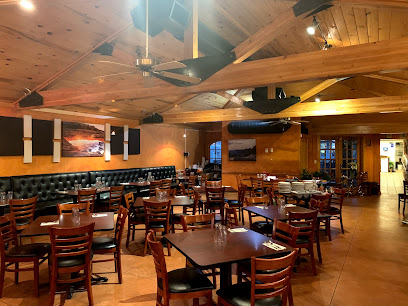
Spitfire Smokehouse + Taps
Experience the best barbecue in Moab at Spitfire Smokehouse + Taps, where great food meets a lively atmosphere.

Dewey's Restaurant and Bar
Experience the best of American cuisine at Dewey's Restaurant and Bar in Moab, where fresh ingredients meet a welcoming atmosphere.

Moab Garage Co.
Discover the inviting atmosphere and delicious menu at Moab Garage Co., the perfect cafe for breakfast, lunch, and sweet treats in Moab, Utah.

Jailhouse Café
Experience the delicious breakfast offerings at Jailhouse Café in Moab, Utah, where local charm meets culinary delight in a vibrant atmosphere.
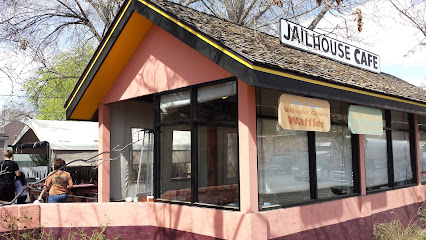
Miguel's Baja Grill
Experience the vibrant flavors of Mexico at Miguel's Baja Grill, a culinary haven for tourists in Moab, Utah.

Trailhead Public House and Eatery
Experience the best of local dining at Trailhead Public House and Eatery in Moab, Utah - a perfect blend of flavors and a vibrant atmosphere.
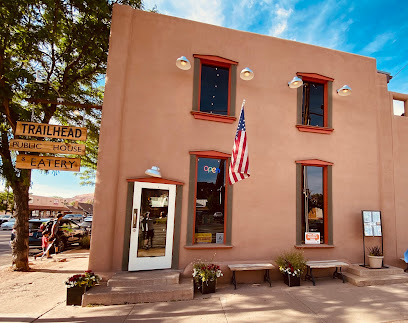
Gloria's
Experience the best of brunch, breakfast, and healthy delights at Gloria's Corner Cafe in Moab, Utah.

Desert Bistro
Discover the exquisite taste of American and Southwestern cuisine at Desert Bistro in Moab, a fine dining experience like no other.
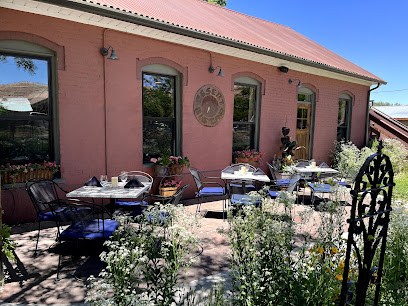
Local Phrases about Arches National Park
-
- HelloYá'át'ééh
[yah-ah-tay] - GoodbyeHa'íí sání
[ha-ee sah-nee] - YesAoo
[ow] - NoT'áá hwó'ají
[taa hwow-a-hee] - Please/You're welcomeNizhóní
[knee-zhoh-nee] - Thank youAhe'hee'
[ah-hay-hay] - Excuse me/SorryK'e bihnézin
[keh bee-nay-zeen] - How are you?Ahe'éhéé'
[ah-hay-ay-hay] - Fine. And you?Baaahóózhí
[baa-ho-zhee] - Do you speak English?Naa dáaníídáá'
[naa daa-nee-daa] - I don't understandT'áá ázi jini
[taa ah-zee jee-nee]
- HelloYá'át'ééh
-
- I'd like to see the menu, pleaseNihí nisiníndé
[nee-hee nee-see-neen-day] - I don't eat meatNaadi'ááhí bískání
[naa-dee-ah-hee bisk-ah-nee] - Cheers!Yá'át'ééh k'ehje
[yah-ah-tay keh-hay] - I would like to pay, pleaseNihí naalnish
[nee-hee nah-ah-lneesh]
- I'd like to see the menu, pleaseNihí nisiníndé
-
- Help!Ááh
[aa-h] - Go away!Hiniishjí
[hee-neesh-jee] - Call the Police!Bilasáana
[bee-la-saa-na] - Call a doctor!Bilí yázhí
[bee-lee yah-zhee] - I'm lostNaalnish
[nah-ah-lneesh] - I'm illNaaltsoos
[nah-ahl-tsohs]
- Help!Ááh
-
- I'd like to buy...Nihí nisiníndé
[nee-hee nee-see-neen-day] - I'm just lookingK'adó nééshjí
[kaa-doh nay-shjee] - How much is it?Díí baa hózhǫ́
[dee baa ho-zhohn] - That's too expensiveNííł yááhí
[nee-eel yah-hee] - Can you lower the price?Baa nihit'éego
[baa nee-hee-tay-go]
- I'd like to buy...Nihí nisiníndé
-
- What time is it?Ha'át'éego baa háí
[haa-ah-tay-go baa ha-ee] - It's one o'clockTʼáá baa hózhǫ́
[taa baa ho-zhohn] - Half past (10)Nihí nisiníndé
[nee-hee nee-see-neen-day] - MorningÁlaahii
[aa-laa-hee] - AfternoonT'áá'íí
[taa-ee] - EveningYííł
[yee-eel] - YesterdayÁt'ééd
[aa-tay-ed] - TodayÉíshjóó'
[ay-shoh-oh] - TomorrowWóózh
[wohz] - 1T'ááłá'
[taa-laa] - 2Naakai
[naa-kai] - 3T'áá'í
[taa-ee] - 4Dį́į́'
[dee-dee] - 5Ashdla'
[ash-dlah] - 6Hastą́ą́
[has-taa] - 7Tseebíízí
[tsee-bee-zee] - 8T'ááłá'
[taa-laa] - 9T'ááłá'
[taa-laa] - 10T'ááłá'
[taa-laa]
- What time is it?Ha'át'éego baa háí
-
- Where's a/the...?Hágoónee'
[haa-goh-nee] - What's the address?Ádóó hwééldií
[aa-doh hweyl-dee] - Can you show me (on the map)?Nihit'éego
[nee-hee-tay-go] - When's the next (bus)?Nihit'éego
[nee-hee-tay-go] - A ticket (to ....)Naalnish
[nah-ah-lneesh]
- Where's a/the...?Hágoónee'
History of Arches National Park
-
The stunning arches and rock formations in Arches National Park were formed over 65 million years through a combination of geological forces. The unique structure of the Entrada and Navajo sandstones, combined with natural processes like erosion, weathering, and the collapse of fin structures, has created over 2,000 documented arches.
-
Long before European settlers arrived, the region now known as Arches National Park was inhabited by Native American tribes, including the Ute and Paiute. These indigenous peoples left behind petroglyphs and pictographs, which can still be seen on rock walls throughout the park, offering a glimpse into their rich cultural heritage and connection to the land.
-
The first recorded European exploration of the area was by the Spanish in the late 18th century. However, it wasn't until the mid-19th century that explorers like John Wesley Powell and other surveyors began to map and document the region more thoroughly, bringing attention to its unique landscapes.
-
Arches National Park was initially established as a national monument on April 12, 1929, by President Herbert Hoover. The designation aimed to protect the extraordinary geological features and natural beauty of the area. This move marked the beginning of efforts to preserve and study the park's unique landscapes.
-
On November 12, 1971, Arches National Monument was re-designated as Arches National Park by an act of Congress. This change reflected the growing recognition of the park's significance and the need for enhanced protection and management of its resources, as well as its increasing popularity among visitors.
-
Arches National Park holds significant cultural value, not only for its geological wonders but also for its historical artifacts and ancient rock art. Visitors can explore sites like Wolfe Ranch, a historic homestead built in the late 1800s, which offers insight into the lives of early settlers and their interaction with the harsh desert environment.
-
In recent years, efforts have been made to balance conservation with visitor access. Ongoing initiatives aim to protect the park's natural and cultural resources, manage the impact of tourism, and preserve the delicate ecosystems within the park's boundaries. These efforts ensure that Arches National Park remains a treasured destination for future generations.
Arches National Park Essentials
-
Arches National Park is located in eastern Utah, near the town of Moab. The closest major airport is Salt Lake City International Airport, approximately 230 miles away. From the airport, you can rent a car and drive to the park, which takes around 4 hours. Alternatively, Grand Junction Regional Airport in Colorado is about 110 miles away, offering a shorter drive of roughly 2 hours. Shuttle services and guided tours from Moab are also available.
-
The most convenient way to explore Arches National Park is by car. There are numerous parking areas near popular trailheads and viewpoints. During peak seasons, consider using the park's shuttle service to reduce congestion. Bicycling is allowed on paved roads but not on trails. Moab offers car rentals, bike rentals, and guided tours that include transportation.
-
The United States Dollar (USD) is the official currency. Credit and debit cards are widely accepted in Moab and at the park’s visitor center. However, it is advisable to carry some cash for smaller establishments and entrance fees. ATMs are available in Moab, but there are no ATMs inside the park itself.
-
Arches National Park is generally safe for tourists, but it's important to take standard precautions. Always lock your car and do not leave valuables in plain sight. The park is known for its rugged terrain, so stay on marked trails and be cautious around cliffs. Moab is a small town with low crime rates, but it’s best to stay vigilant, especially in crowded areas.
-
In case of emergency, dial 911 for immediate assistance. The park has rangers who can provide help, and there are first aid stations at the visitor center. Moab Regional Hospital is the nearest medical facility. Always carry a basic first aid kit and plenty of water, as dehydration is a common issue.
-
Fashion: Do wear comfortable, weather-appropriate clothing and sturdy hiking boots. Avoid flip-flops or open-toed shoes. Religion: Do respect any Native American cultural sites and artifacts you may encounter. Public Transport: Do use the park’s shuttle service during peak seasons. Don't expect public transport options within the park itself. Greetings: Do greet fellow hikers and rangers with a friendly nod or hello. Eating & Drinking: Do bring plenty of water and snacks. Don't litter; always use designated trash bins.
-
To experience Arches National Park like a local, visit during the early morning or late afternoon to avoid crowds and enjoy cooler temperatures. Check out the Fiery Furnace, a labyrinth of narrow sandstone canyons, by obtaining a permit or joining a guided tour. Participate in ranger-led programs to learn more about the park’s geology and history. Don’t miss the stargazing opportunities, as the park is a designated International Dark Sky Park.
Nearby Cities to Arches National Park
-
Things To Do in Green River
-
Things To Do in Grand Junction
-
Things To Do in Blanding
-
Things To Do in Huntington
-
Things To Do in Price
-
Things To Do in Montrose
-
Things To Do in Torrey
-
Things To Do in Duchesne
-
Things To Do in Ouray
-
Things To Do in Ephraim
-
Things To Do in Vernal
-
Things To Do in Escalante
-
Things To Do in Glenwood Springs
-
Things To Do in Richfield
-
Things To Do in Durango

